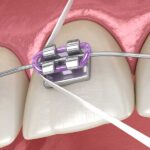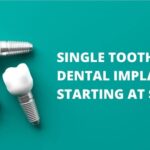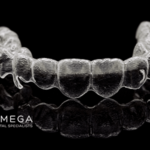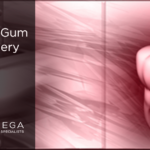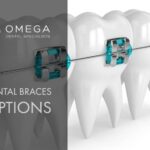What Are The Causes of Malocclusion?
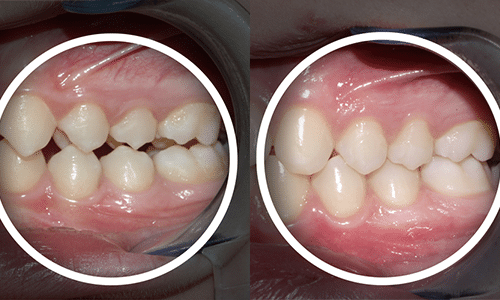
Table of Contents
Have you ever heard of a malocclusion?
A malocclusion happens when the teeth are mismatched in relation to the jaw. Orthodontic treatment can fix most of the malocclusions. This can cause a person to have a bad bite. A malocclusion can result in crooked teeth, protruding teeth, crowded teeth and can even lead to gum problems and periodontal disease. Severe headaches and sleep disorders are commonly known to happen amongst those who have some degree of malocclusion. Although you may not have heard of malocclusion before up until now you probably know someone who has a degree of malocclusion whether it’s a friend or family member. In fact, two out of three adults in America are born with some degree of malocclusion. To further clarify what malocclusion really is it refers to any type of misalignment contact between the upper and lower set of teeth such as an overbite, open bite, underbite or cross-bite.

What Causes Malocclusion (Misaligned Teeth)?
Most often, malocclusion is inherited genetically or passed down through one’s family. Other times, malocclusion can be caused by other behaviors or conditions that could change the jaw’s shape or structure, like:
- Frequent use of a pacifier as a baby or toddler
- Thumb-sucking
- Extended bottle-feeding in infancy or childhood
- A cleft lip/palate
- An injury that realigns the jaw
- Oral or jaw tumors
- Dental care that is low-quality
- Teeth that are abnormally shaped or impacted
How does malocclusion affect a person health?
Malocclusion can affect a person’s appearance speech and ability to eat. In the olden days, our ancestor’s jaws were much larger and it made a normal bite. There used to be more space in the mouth with plenty of room for the teeth to come in including the wisdom teeth. Due to changes over the years in diets and genetics, jaw sizes have shrunk over time thus the statistics if one in five people having some sort of malocclusion where their teeth don’t line up correctly. Most of the misalignments are minor and some don’t even need to be corrected. In some cases, it will require a referral to a specialist so that they can have their ideal smile. Malocclusion can also be caused by a mismatch between the jaw size and the size of teeth, dental diseases, and enlarged tonsils. It can be caused by thumb sucking or tongue thrusting habits and premature loss of missing teeth.
Malocclusion seems like a very broad category, but it actually has different categories. Category one is where the teeth have spaces between them that may be rotated or crowded. Category 2 is the most common where the lower jaw is too far back which causes an overbite and poor molar relations. Category 3 is where the lower jaw protrudes, and it causes an underbite in the lower and upper teeth.
What Are the Signs and Symptoms Malocclusion?
The symptoms of malocclusion can vary from mild to severe. The signs and symptoms most closely related include pain or discomfort when biting or chewing, a change in the alignment of the teeth, a change in the appearance of one’s face, the development of a speech problem, and breathing through the mouth instead of the nose. The severity of a person’s symptoms is closely related to the diagnosis, classification, and treatment of malocclusion.
What happens if malocclusion is left untreated?
If left untreated, malocclusion can lead to tooth damage, broken teeth, tooth loss and difficulties with speaking and chewing. An improper bite can cause problems in the temporomandibular joint (TMJ) which cause pain and chewing difficulty.
How is malocclusion diagnosed? Malocclusion doesn’t have any symptoms but can cause pain from stress on the teeth or jaw. In order to diagnose malocclusion, your dentist has to diagnose it during a routine examination where photographs and x-rays of the face and mouth will be taken for further study. In order to know the extent of the malocclusion, the dentist will create either a plaster, plastic or artificial stone model of the patient’s teeth. The model of the patient’s teeth will be extremely useful in analyzing and examining treatment plans and options.
How is Malocclusion Diagnosed and Classified?
Malocclusion can usually be detected during a routine dental exam. A dentist can examine the mouth and take x-rays to check for alignment complications. The severity and type of malocclusion can determine the best course for treatment. If the dentist does indeed detect malocclusion, it can be classified into three major types.
Class 1 Malocclusion
This class is the most commonly diagnosed and is characterized by the upper teeth overlapping the lower teeth. With this type, the overlap is only slight and the person’s bite is normal.
Class 2 Malocclusion
This class is characterized by the appearance of retrognathism, or a severe overbite, where the upper teeth and jawline overlaps the lower half significantly.
Class 3 Malocclusion
This class is characterized by the appearance of a severe underbite, also known as prognathism, where the lower jawline protrudes out and forces the lower teeth to overlap the uppers.
How is malocclusion treated?
Malocclusions are usually treated depending on the severity but there are many treatment options to choose from. You can trust that your orthodontist will give you proper treatment options since he or she specializes in correcting malocclusion issues. While braces are some of the most common here is a list of treatment options your orthodontist or oral surgeon may recommend:
Braces are the most common remedy that is used to treat malocclusion. About 4 million people in the US wear braces including adults. As an alternative to braces, you have the choice to choose Invisalign which are clear braces. They function as braces and are nearly invisible. They’re also easy to clean and can be taken out for brief periods of time. A benefit of Invisalign is that you unlike traditional braces Invisalign are to be used for a shorter period of time.
If prematurely lost teeth are an issue, your orthodontist may issue you a space maintainer. The job of a space maintainer is to keep the other teeth from moving out of their natural position. This method will help your teeth align while your soon-to-be teeth come in if you are expecting emerging teeth as well. If overcrowding teeth is a problem one or more teeth may be surgically removed.
If your case is severe surgery might be necessary, even though it should be considered as a last resort. The patient will be referred to a dental specialist for this treatment. In these cases, surgery would be needed for Category 3 malocclusion. The last treatment option would be an orthogenetic procedure that’s done by an oral surgeon in order to shorten the lower jaw. Shortening the lower jaw will result in proper alignment of the teeth.
Regular visits to your dentist or dental specialist will help diagnose any occlusion problems with your teeth. If you are an adult, it’s never too late to address any issues that involve an improper bite. This is what the dentist at Omega Dental Specialists are for.
-
February 15, 2023What Is The Average Cost Of Braces In Houston?
-
July 26, 2022Should I Have My Wisdom Teeth Removed Before I Get Braces?
-
September 23, 2021Pain After Braces
-
September 15, 2021how much does invisalign cost?
-
September 14, 2021Dental Cleaning Before Getting Braces and Cleaning Braces
-
May 18, 2021Braces Colors
-
January 18, 2021What you need to know about Invisalign Houston
-
November 24, 2019Invisalign and Braces Alternatives
